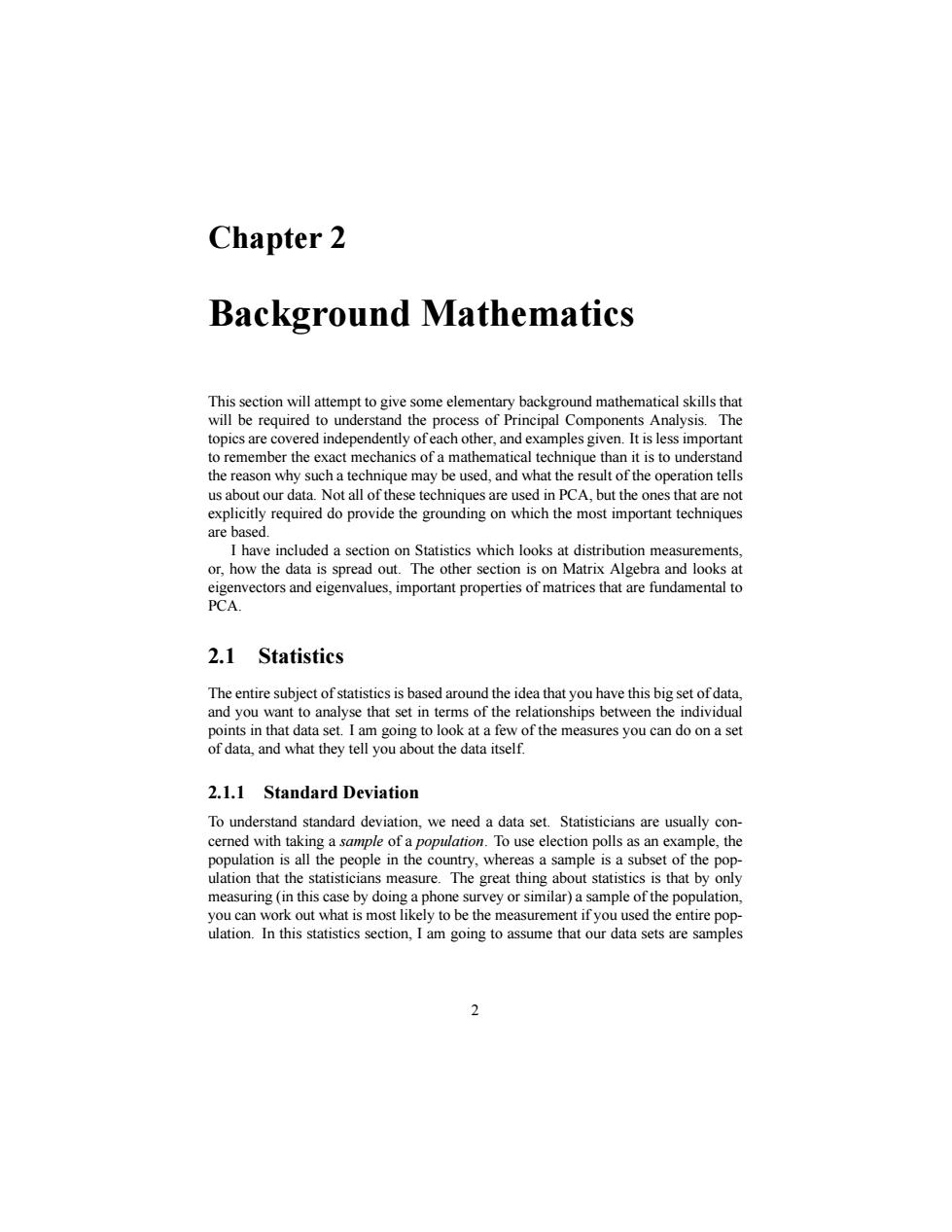正在加载图片...

Chapter 2 Background Mathematics This section will attempt to give some elementary background mathematical skills that will be required to understand the process of Principal Components Analysis.The topics are covered independently ofeach other,and examples given.It is less important to remember the exact mechanics of a mathematical technique than it is to understand the reason why such a technique may be used,and what the result of the operation tells us about our data.Not all of these techniques are used in PCA,but the ones that are not explicitly required do provide the grounding on which the most important techniques are based. I have included a section on Statistics which looks at distribution measurements. or,how the data is spread out.The other section is on Matrix Algebra and looks at eigenvectors and eigenvalues,important properties of matrices that are fundamental to PCA. 2.1 Statistics The entire subject of statistics is based around the idea that you have this big set of data, and you want to analyse that set in terms of the relationships between the individual points in that data set.I am going to look at a few of the measures you can do on a set of data,and what they tell you about the data itself. 2.1.1 Standard Deviation To understand standard deviation,we need a data set.Statisticians are usually con- cerned with taking a sample of a population.To use election polls as an example,the population is all the people in the country,whereas a sample is a subset of the pop- ulation that the statisticians measure.The great thing about statistics is that by only measuring(in this case by doing a phone survey or similar)a sample of the population, you can work out what is most likely to be the measurement if you used the entire pop- ulation.In this statistics section,I am going to assume that our data sets are samples 2Chapter 2 Background Mathematics This section will attempt to give some elementary background mathematical skills that will be required to understand the process of Principal Components Analysis. The topics are covered independently of each other, and examples given. It is less important to remember the exact mechanics of a mathematical technique than it is to understand the reason why such a technique may be used, and what the result of the operation tells us about our data. Not all of these techniques are used in PCA, but the ones that are not explicitly required do provide the grounding on which the most important techniques are based. I have included a section on Statistics which looks at distribution measurements, or, how the data is spread out. The other section is on Matrix Algebra and looks at eigenvectors and eigenvalues, important properties of matrices that are fundamental to PCA. 2.1 Statistics The entire subject of statistics is based around the idea that you have this big set of data, and you want to analyse that set in terms of the relationships between the individual points in that data set. I am going to look at a few of the measures you can do on a set of data, and what they tell you about the data itself. 2.1.1 Standard Deviation To understand standard deviation, we need a data set. Statisticians are usually concerned with taking a sample of a population. To use election polls as an example, the population is all the people in the country, whereas a sample is a subset of the population that the statisticians measure. The great thing about statistics is that by only measuring (in this case by doing a phone survey or similar) a sample of the population, you can work out what is most likely to be the measurement if you used the entire population. In this statistics section, I am going to assume that our data sets are samples 2